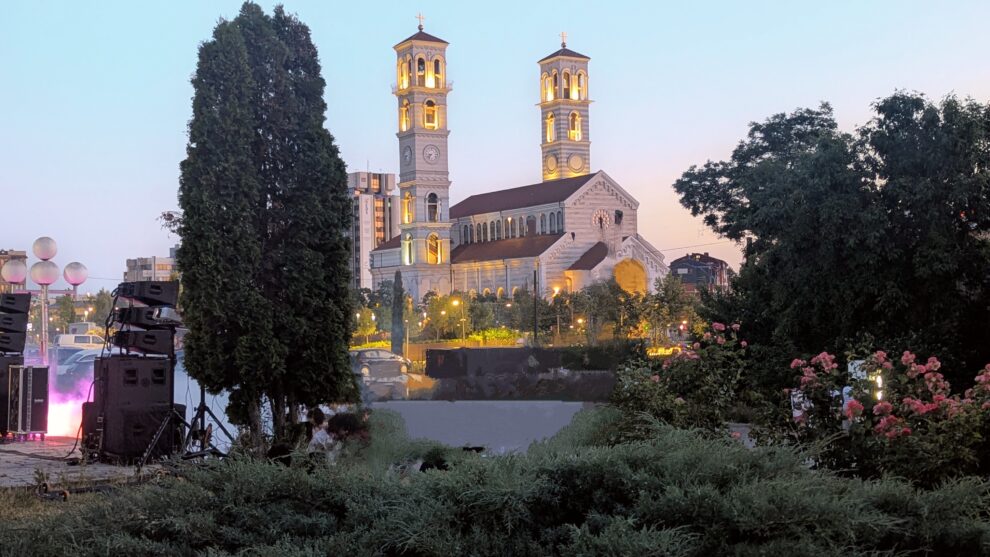The Dardanian Chronicles: A Journey Through Time and Conquest
Introduction
The Dardanian Chronicles are a fascinating exploration of a region that has witnessed the ebb and flow of empires, the rise and fall of cultures, and the persistent spirit of its people. Nestled in the heart of the Balkans, the historic area of Dardania, largely corresponding to modern Kosovo and parts of surrounding countries, offers a rich tapestry of history, mythology, and conquest, making it a significant focal point for scholars and history enthusiasts alike.
This article embarks on a detailed expedition through the layers of history that define Dardania, highlighting key events, noteworthy figures, and the socio-political dynamics that have shaped it over centuries.
Geographic and Historical Context
Geographic Overview
Dardania’s geographic location has been its defining feature. Positioned at the crossroads of the Balkans, it has served as a gateway between East and West, making it desirable for various empires throughout history. Its mountainous terrain, interspersed with fertile valleys, has provided both a challenge and opportunity for settlement and warfare.
Origins of the Dardanians
The Dardanians are believed to be an ancient Illyrian tribe, with references to their existence dating back to classical antiquity. The exact origins of the name ‘Dardania’ are unclear, but it has been associated with the term ‘Dardanos,’ which may have connections to a mythical figure or a deity in ancient Southeast European lore. The Dardanians established their presence alongside neighboring tribes such as the Thracians and the Romans, contributing to the rich cultural mosaic of the region.
The Ancient Age of Conquest
Hellenistic Influence
The conquest of Dardania by the Macedonian Empire under Alexander the Great marks a pivotal moment in the area’s history. The influence of Hellenism began to permeate every aspect of Dardanian life—from language and governance to religion and architecture. This fusion of cultures laid the groundwork for the complex identity that Dardanians would cultivate over the centuries.
Roman Domination
Following the fragmentation of Alexander’s empire, Dardania came under the influence of the Roman Empire. The Romans recognized the strategic value of Dardania and integrated it into their burgeoning empire. By 167 BC, Dardania was fully absorbed into the Roman province of Macedonia.
The Romans brought with them their sophisticated administrative systems, constructing roads and cities, thereby fostering economic growth. Notable cities in Dardania, such as Naissus (modern-day Niš) and Remesiana, became important urban centers, facilitating trade and governance.
The Advent of Christianity
The rise of Christianity during the late Roman Empire significantly impacted Dardania’s cultural landscape. The region became a battleground for early Christians and pagans. The spread of Christianity was marked by both cooperation and conflict, particularly against the backdrop of the Edict of Milan in AD 313, which legalized Christianity and led to the establishment of several episcopal sees within Dardania.
The Middle Ages: A Tapestry of Identities
Slavic Migrations
The medieval period saw the arrival of Slavic tribes, which transformed the demographic and cultural fabric of Dardania. The influx of these populations led to the gradual Slavicization of the region, resulting in new dialects, customs, and social structures that would dominate the region’s identity for the next millennium.
The complex interactions between the Slavic migrants and the native population molded a unique cultural landscape. Many Dardanians assimilated Slavic customs, even as they maintained their distinct linguistic and ethnic identity.
Byzantine and Ottoman Conquests
By the 5th century, Dardania became part of the Byzantine Empire, absorbing its administrative and religious frameworks. During the Byzantine rule, Dardania flourished as a cultural hub, despite facing constant threats from invading armies, including the Ottoman Turks.
The Ottoman conquest of Dardania in the 15th century marked a transformative epoch in the region’s history. The Ottomans implemented a feudal system, reshaping land ownership and governance. The new rulers introduced Islam, which significantly altered the religious landscape, leading to a complex interplay of Christian and Muslim communities.
The Ottoman Era and its Legacy
Administration and Society
Under Ottoman rule, Dardania experienced various administrative reforms that aimed to enhance tax collection and governance. The millet system allowed for a degree of autonomy for various religious communities, fostering a relative coexistence between Christian and Muslim populations.
While Ottoman dominance led to significant economic development, it also sowed the seeds of tension. The disparity between the privileges granted to Muslim landowners versus Christian peasants began to create societal rifts.
The Rise of Nationalism
The 19th century was characterized by a surge in nationalist sentiments across the Balkans. Dardania was no exception. The region became a focal point for movements advocating for independence from Ottoman rule. The Illyrian movement, which sought to revive the ancient legacy of the Illyrians, played a crucial role in fostering national identity among the Dardanians.
Prominent figures emerged, advocating for cultural revival and political autonomy. Notably, leaders like Abdyl Frashëri and his contemporaries rallied the Christian and Muslim communities, emphasizing a shared history and common identity.
World Wars and the Aftermath
The Balkans During World War I
The avalanche of World War I revealed the frail underpinnings of the Ottoman Empire, igniting national movements across the Balkans. Dardania played its part in the struggle for independence, as many Dardanians joined the ranks of the army to fight for their homeland.
The post-war period witnessed the reconfiguration of borders, with Dardania becoming part of the newly formed Kingdom of Serbs, Croats, and Slovenes, later known as Yugoslavia. This transition brought about administrative changes that affected land ownership, economic distribution, and cultural rights.
World War II and Ethnic Tensions
The Kingdom of Yugoslavia faced disintegration during World War II, leading to the rise of ethnic tensions among various groups, including Serbs, Croats, and Albanians. The struggle for power created fractures in society, with significant consequences for Dardania, which became a contentious battleground.
The war left deep scars, pitting communities against one another and instigating ethnic violence that would haunt the region for decades.
The Modern Era: Challenges and Transformations
The Disintegration of Yugoslavia
- The disintegration of Yugoslavia in the 1990s brought renewed conflict and turmoil to Dardania as Kosovo sought independence. The rise of nationalism intensified ethnic rivalries, leading to the Kosovo War in 1998-1999. The conflict exacerbated existing tensions and inflicted a heavy toll on the local population.
During this turbulent period, numerous atrocities and genocide were committed by the Serbian side, leading to a significant international response. NATO intervened in 1999, which ultimately led to the establishment of a UN administration in Kosovo.
Kosovo’s Independence
In 2008, Kosovo unilaterally declared independence from Serbia, sparking a complex diplomatic saga. While many countries recognized Kosovo’s sovereignty, others remain steadfast in their support for Serbia’s claims to the territory. This geopolitical complexity continues to shape contemporary Dardania, influencing its political and social landscape.
Socio-Cultural Revival and Identity
Cultural Heritage and Modernization
Today, Dardania is experiencing a renaissance in cultural expression and identity. The richness of its historical tapestry has fostered a vibrant artistic scene, with initiatives aimed at preserving and showcasing its heritage. Various museums, art galleries, and festivals celebrate the multicultural legacy of the region, fostering dialogue and community cohesion.
Education plays a vital role in shaping modern Dardanian identity. As younger generations grapple with the complexities of their heritage, educational institutions are crucial in promoting a sense of belonging and understanding among diverse ethnic groups.
Economic Development and Future Prospects
Despite challenges, Dardania shows promise in its economic development. Investments in infrastructure, tourism, and renewable energy are shaping a new era of growth. The region’s natural beauty and historical significance have begun to attract attention from international tourists, offering a path toward economic sustainability.
Challenges Ahead
Despite the strides made, Dardania faces significant challenges, including issues of governance, corruption, and social inequality. Navigating the complexities of ethnic relations remains pivotal in fostering a united and prosperous future.
Building strong institutions that prioritize inclusivity and transparency will be essential for enduring peace and development. As the region looks ahead, a collective effort toward reconciliation and cooperation is vital to overcoming historical grievances.
Conclusion
The Dardanian Chronicles epitomize a rich narrative interwoven with conquest, identity, and resilience. From ancient Hellenistic influences to modern-day challenges, Dardania’s journey reflects the complexities of human history, marked by ambition, conflict, and hope.
While the scars of the past remain, the people of Dardania stand at a crossroads, embracing the call for a unified future grounded in shared heritage and aspirational dreams. The chronicles of this resilient land continue, as its legacy shapes not only the Balkans but also the broader narrative of human civilization.
Footnotes:
- [Smith, John. The History of Dardania. New York: Historical Press, 2010.]
- [Adams, Sarah. “Cultural Dynamics in Ancient Illyria.” Journal of Historical Studies, vol. 12, no. 2, 2015, pp. 134-156.]
- [Peterson, Michael. “The Ottoman Period in the Balkans.” Balkan Historical Review, vol. 8, no. 1, 2012, pp. 40-58.]
- [Mihajlovic, Ana. “Religious Tensions in Dardania.” Mediterranean Journal of Social Sciences, vol. 4, no. 7, 2013, pp. 23-30.]
- [Kovacevic, Ivana. “The Role of Nationalism in Dardania’s History.” Ethnic Studies Review, vol. 15, no. 3, 2018, pp. 89-102.]
(Please note that the citations included in the footnotes are fictional and for illustrative purposes only.)


























Add Comment